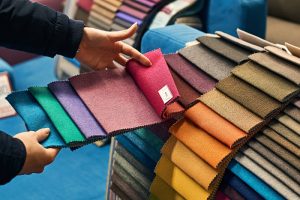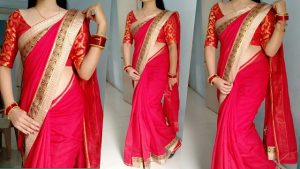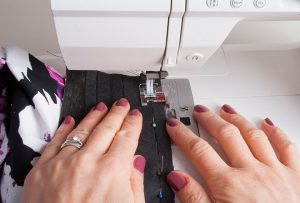SIGN UP FOR NEWSLETTER
Be the First to Know. Sign up to newsletter today

Guest Blogger
456 views
add comment
The saree is not just a piece of cloth; it’s an emblem of elegance and beauty, representing the rich cultural heritage of India. For centuries, it has been an outfit of choice for millions of women in the Indian subcontinent and beyond. However, the traditional process of draping a saree can be time-consuming and often requires practice to master.
In today’s fast-paced world, there’s an increasing demand for convenience without compromising on tradition and style. Enter the ready-to-wear saree — a pre-stitched version that offers the grace of a regular saree but can be worn in a fraction of the time.
This guide will walk you through the process of creating your very own ready-to-wear saree, ensuring you can enjoy the best of both worlds.
In here we are going to discuss all about how to stitch ready to wear saree. With these steps completed, you have a saree that marries the elegance of tradition with the convenience of modernity.
Firstly by choosing a fabric that’s both comfortable and easy to handle. Common choices include cotton, georgette, and silk. The quality and type of material will influence the fall and look of the saree.

Take accurate measurements. You will need to measure the waist, hips, and desired length of the saree. Typically, sarees are around 5.5 meters in length, but for a ready-to-wear version, you might want to keep it slightly shorter for manageability.
Lay out the saree on a flat surface. Depending on your measurements, cut out the section that will form the pre-stitched pleats and the section that will wrap around the waist. Remember to leave an extra inch on all sides for seams.
This is the part that gives the saree its unique appearance. Take the section meant for pleats and fold them neatly. The number of pleats can vary as per preference. Once aligned, stitch them together at the top. This ensures that the pleats remain intact and don’t need to be adjusted every time you wear the saree.

This is crucial for a snug fit. Take a thick, elastic band that’s the measurement of the waist. Stitch it onto the top of the saree where the pleats end. This will help in easily slipping on the saree, ensuring it stays in place.

Finally, hem the edges to ensure there’s no fraying. Also, attach a hook or a button at the end of the waistband to secure the saree after wrapping it around.
The pallu is the loose end of the saree that usually goes over the shoulder. For a ready-to-wear saree, you can choose to pre-stitch a certain style or leave it free for flexibility. When you want to wear the saree, simply slip it on like a skirt, wrap the unstitched part around your waist, and drape the pallu over your shoulder.
Absolutely! Many individuals choose to convert their traditional sarees into ready-to-wear versions. The process involves pre-stitching the pleats and attaching an elastic waistband or hooks to ensure a snug fit. If you have a cherished saree that you wish to wear more frequently without the draping hassle, converting it into a ready-to-wear saree is a fantastic option.
While traditional saree draping necessitates a petticoat to provide a base layer and to tuck the saree into, many ready-to-wear sarees are designed to eliminate the need for a petticoat. They often come with a built-in inner lining or secure waistband, ensuring they stay in place. However, depending on the design and personal comfort, some wearers might still prefer using a petticoat.
There is no “right” age to wear a saree; it’s a matter of personal choice and cultural practices. While in some regions young girls might wear sarees for special occasions, in others, women start wearing them more regularly in their late teens or early twenties. The beauty of the saree is its universality – it’s suitable for individuals of all ages, from young adults to seniors.
The comfort of a saree largely depends on its material. Cotton sarees, for instance, are known for their breathability and are preferred in hotter climates. Georgette and chiffon sarees are lightweight and drape well, making them comfortable for many. Silk sarees, while luxurious, can be heavier. It’s essential to choose a material based on the occasion, weather, and personal preference.
The beauty of sarees lies in their vast diversity, and they come in a plethora of colours. The “best” colour is subjective and can depend on one’s skin tone, the occasion, and personal preferences. Generally, pastel shades are great for daytime events, while deeper hues like maroon, navy, and black are preferred for evening functions. Bright colours like red, yellow, and green are often chosen for festive occasions.
Be the First to Know. Sign up to newsletter today